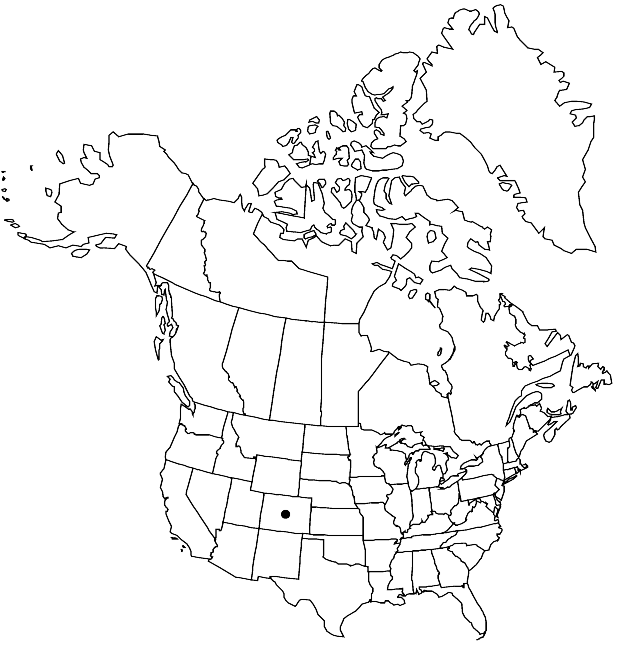Physaria vicina
Novon 12: 328. 2002.
Perennials; (flowering in the first-year); caudex branched, (well-developed); densely pubescent, trichomes (subsessile, appressed to spreading), 3–6-rayed, rays furcate or bifurcate, usually slightly fused at base, less frequently distinct. Stems few to several from base, ascending (in flower) to nearly prostrate (in fruit), (unbranched), 1–2.5 dm. Basal leaves: (petiole 1–3.5 cm); blade ovate to rhombic or rotund, 2–7 cm, (base narrowed abruptly to petiole), margins usually entire, occasionally shallowly repand, (flat). Cauline leaves: blade elliptic or narrowly so, (0.7–) 1–2.5 cm, (base narrowed gradually to petiole), margins entire. Racemes dense, (elongated in fruit). Fruiting pedicels (ascending, curved to slightly sigmoid), (4–) 6–12 mm, (stout). Flowers: sepals (lavender under grayish trichomes), elliptic, 4–6 mm; petals (white, pale-yellow basally, often tinged lavender abaxially), narrowly spatulate, 6–10 mm, (claw undifferentiated from blade). Fruits subglobose to ovoid, slightly compressed, 5–7 mm; valves densely pubescent, trichomes spreading; ovules 8–12 per ovary; style 4–6 mm. Seeds flattened, (faintly margined).
Phenology: Flowering May–Jun.
Habitat: Nearly barren sites, soils derived from Mancos Shale or, less frequently, Jurassic sandstone, pinyon-juniper, sagebrush, Gambel oak
Elevation: 1800-2200 m
Distribution

Colo.
Discussion
Of conservation concern.
Selected References
None.
Lower Taxa
"not" is not a number. "elongated" is not a number."thick" is not a number."dm" is not declared as a valid unit of measurement for this property.